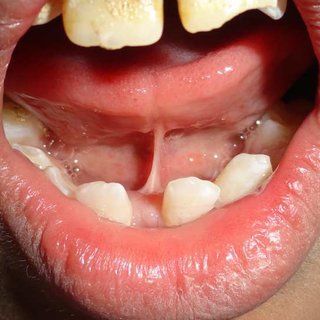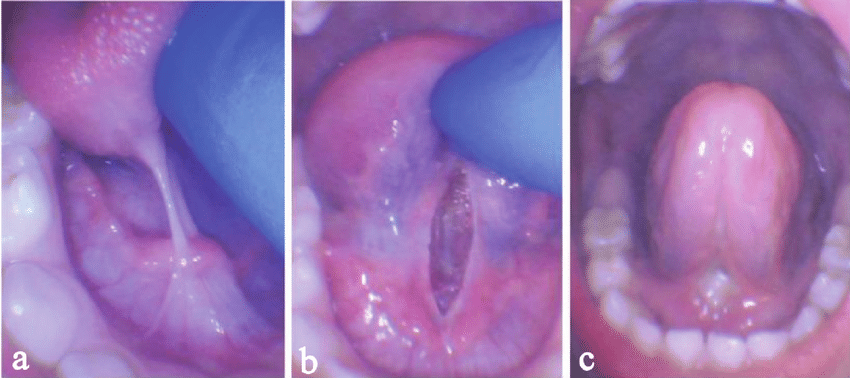Tongue Tie
content of this page
1- Introduction
2- Anatomical Overview
3- Causes
4- Treatment
Introduction
The frenulum linguae is a small fold of tissue located under the tongue. It connects the bottom of the tongue to the floor of the mouth. This structure helps to anchor the tongue in place and restrict its movement, aiding in speech and swallowing.

Anatomical Overview
The frenulum linguae is a mucous membrane fold located on the underside of the tongue. It extends from the midline of the tongue’s inferior surface to the floor of the mouth, helping to secure the tongue’s position within the oral cavity. This small but important structure plays a role in the movement and functionality of the tongue, facilitating actions such as speaking, eating, and swallowing. Anatomically, it is positioned between the sublingual caruncles, where the ducts of the submandibular glands open. In some individuals, a short or tight frenulum, a condition known as ankyloglossia or “tongue-tie,” can restrict tongue movement, potentially impacting speech and oral hygiene, and may require a frenotomy or frenuloplasty to correct.

Causes
Congenital Factors:
- Genetic Predisposition: Tongue-tie is often present at birth and may run in families, suggesting a genetic component.
- Developmental Anomalies: During fetal development, the tissue that forms the frenulum may not undergo the usual process of cell death and separation, leading to a shorter or tighter frenulum.
Associated Conditions:
- Cleft Lip and Palate: Infants with these conditions may also have tongue-tie due to the altered development of oral structures.
Environmental Factors:
- Prenatal Influences: Factors during pregnancy, such as maternal health and nutrition, may affect fetal development and potentially contribute to the formation of a short or tight frenulum.
No Known Cause:
- In many cases, the exact cause of tongue-tie remains unknown, as it can occur in otherwise healthy infants without any identifiable risk factors.
Treatment
Observation:
- Mild Cases: In cases where the tongue-tie is not causing significant problems, no immediate treatment may be necessary. The condition might improve as the child grows.
Speech Therapy:
- Speech and Feeding Exercises: For those with mild to moderate tongue-tie, speech therapists can provide exercises to improve tongue movement and function.
Surgical Procedures:
- Frenotomy: A simple and quick procedure where the frenulum is snipped to release the tongue. This is often done in infants and usually involves minimal discomfort.
- Frenuloplasty: A more complex surgical procedure, which may be recommended for older children or adults, especially if the frenulum is thicker. It involves cutting and repositioning the frenulum and may require stitches. This procedure is typically done under local or general anesthesia.
Laser Surgery:
- Laser Frenectomy: A laser is used to release the frenulum. This method is often preferred for its precision, reduced bleeding, and quicker healing time.
Post-Procedure Care:
- Stretching Exercises: After surgery, exercises are often recommended to prevent the frenulum from reattaching and to enhance tongue mobility.
- Follow-up Appointments: Regular check-ups to monitor healing and ensure that the tongue has improved in function.